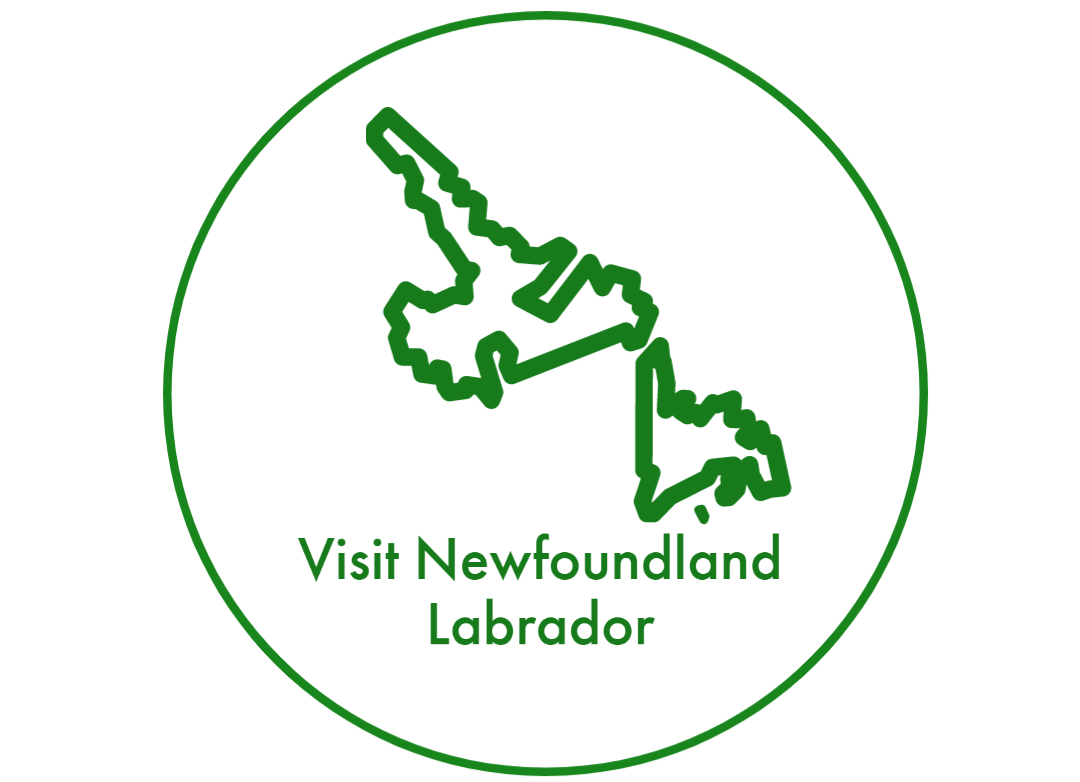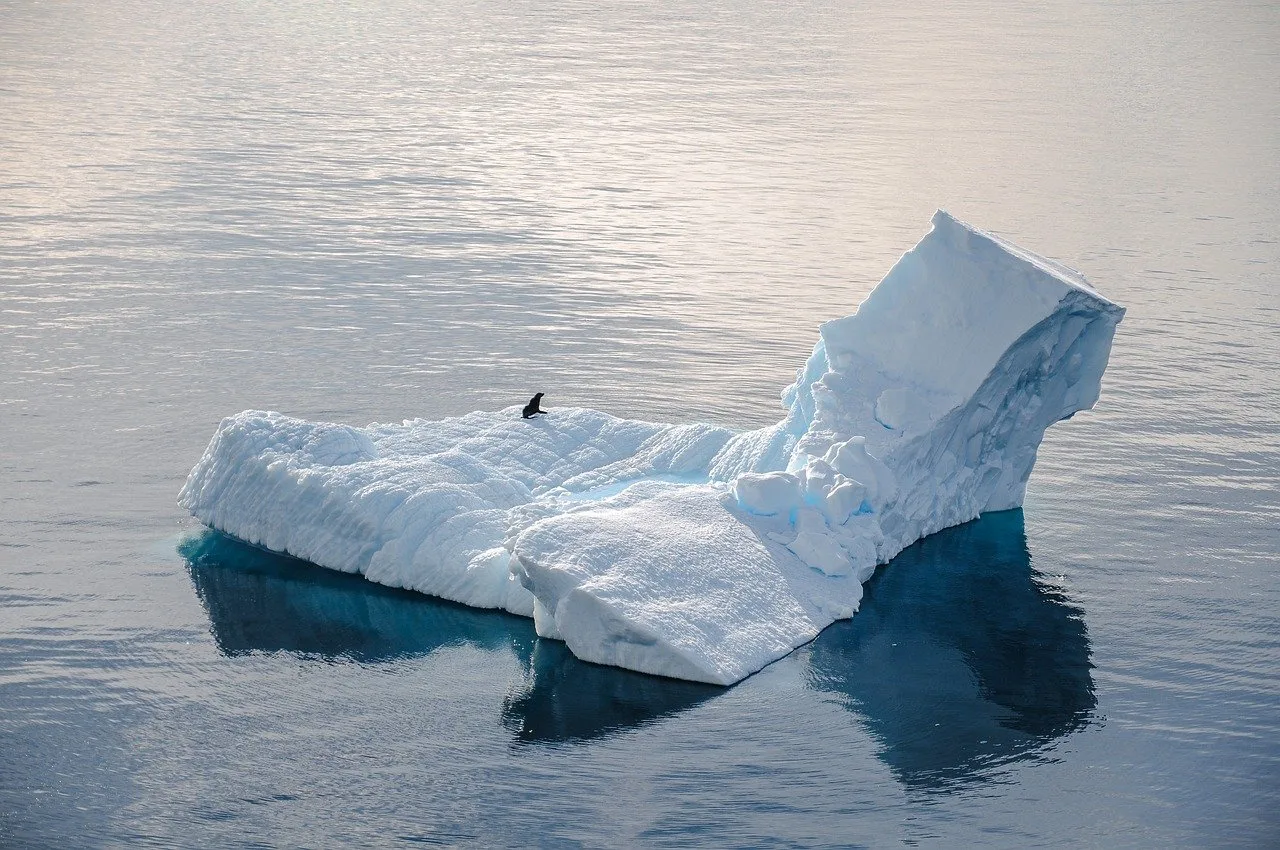Iceberg Watching in Newfoundland and Labrador. The best!
Iceberg Watching in Newfoundland and Labrador. A Majestic Coastal Experience. Iceberg watching along the Newfoundland and Labrador coastline offers a unique opportunity to witness the inspiring beauty of massive icebergs as they gracefully float through the North Atlantic. This natural phenomenon attracts visitors from around the globe, seeking an unforgettable encounter with these breathtaking icy giants.
We will explore the fascinating world of iceberg watching, shedding light on the best locations, optimal viewing periods, and the captivating science behind these majestic formations. Whether you are an adventure seeker, a nature enthusiast, or simply searching for a remarkable experience, iceberg watching in Newfoundland and Labrador promises to leave an indelible mark on your memories.
The Geographical Splendor of Newfoundland and Labrador
Newfoundland and Labrador, situated on the easternmost edge of North America, boasts a picturesque coastline stretching thousands of kilometres. This region is renowned for its rugged cliffs, pristine beaches, and abundant wildlife.
Its unique location on the so-called “Iceberg Alley,” a migratory route for icebergs from Greenland, makes it a prime destination for iceberg enthusiasts. As a result of the Labrador Current and the Gulf Stream, thousands of icebergs, born from ancient glaciers, embark on a remarkable journey along the coastline each year. The contrasts between the crystal clear blue waters and the massive white ice formations create a surreal and captivating landscape.
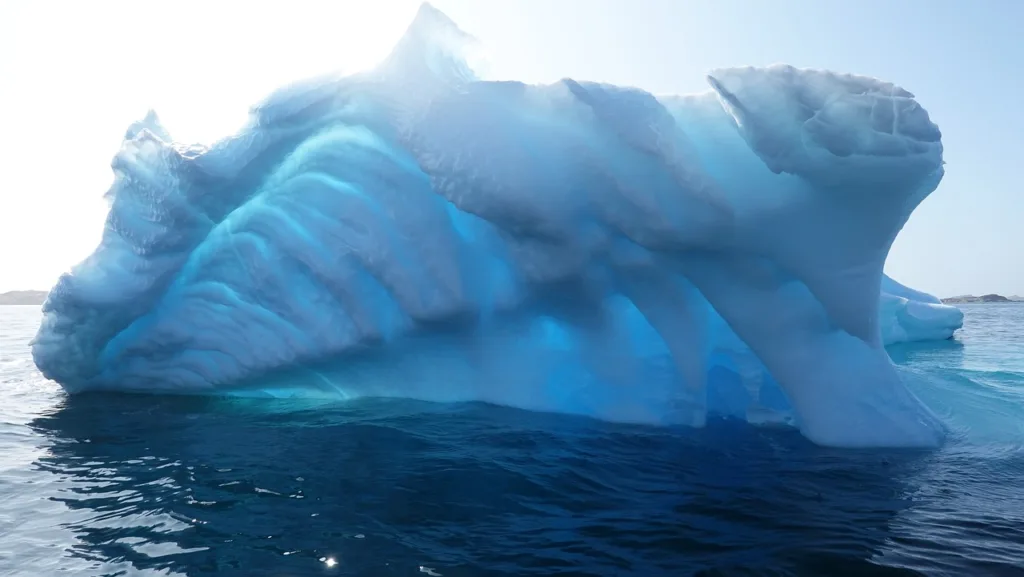
The Science Behind Iceberg Formation
Understanding the science behind iceberg formation adds another layer of fascination to this natural spectacle. Icebergs are created when chunks of glaciers break off from the Greenland ice sheet, calving into the ocean. These colossal ice masses can measure anywhere from a few meters to several kilometres in length.
The visible portion of an iceberg, commonly called the “tip of the iceberg,” is just a fraction of its total size. Approximately 90% of an iceberg remains submerged underwater, creating mystery and intrigue. The immense weight of these ice formations causes them to drift slowly with ocean currents, sometimes at a rate of a few kilometres per day.
More Newfoundland and Labrador Travel Guides
- A Guide to Experiencing the Thrills of Newfoundland Whale Watching Season
- How To Best Experience Newfoundland Whale Watching Season
- How to Discover Icebergs in Newfoundland
- Where Big icebergs off the coast of Newfoundland come from
- How To Experience 500,000 Colorful Puffins in Newfoundland
- How To See both Whales and Puffins in Newfoundland
- How to Best Enjoy Whale Watching in Newfoundland and Labrador
Prime Locations for Iceberg Watching
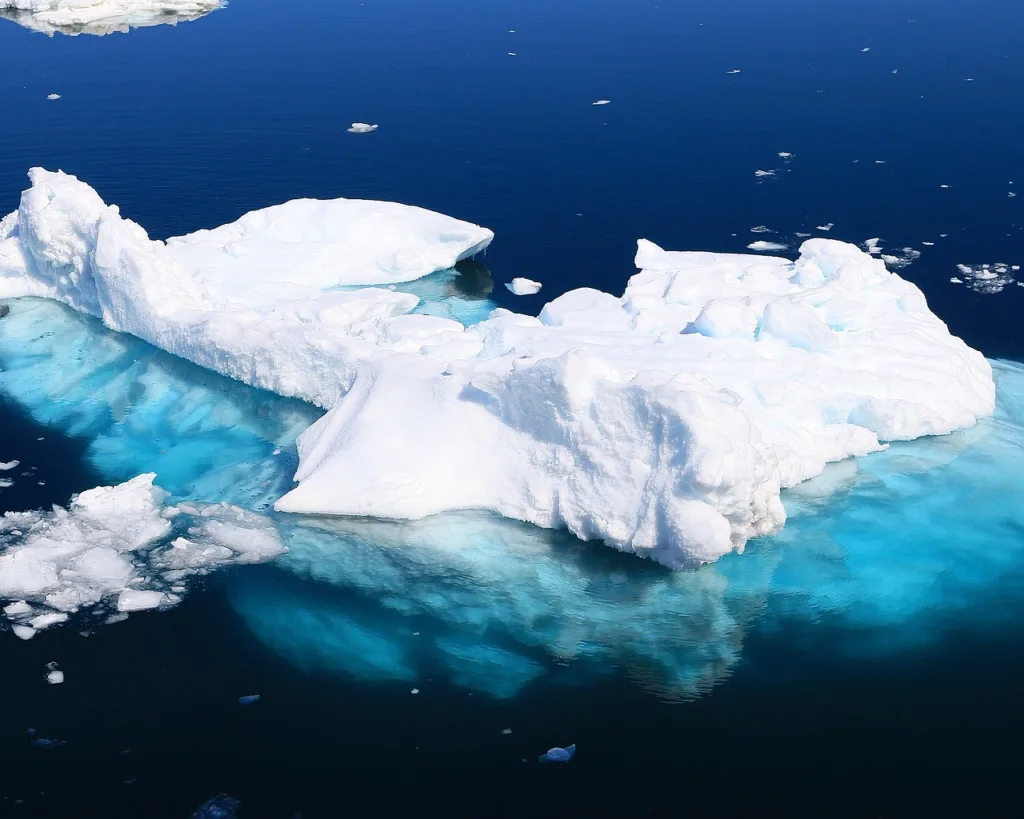
Newfoundland and Labrador offer numerous vantage points along the coastline, each providing a unique perspective for iceberg watching.
Here are some of the most popular locations:
a. St. Anthony:
St. Anthony is a regional iceberg watching hub located on the Great Northern Peninsula. With its Iceberg Festival in June, visitors can enjoy various activities, including boat tours, kayaking, and hiking.
b. Twillingate:
Known as the “Iceberg Capital of the World,” Twillingate is famous for its stunning ice formations. The Long Point Lighthouse offers a picturesque view, and boat tours provide an up-close encounter with the icebergs.
c. Bonavista:
Bonavista Peninsula offers a combination of historical charm and iceberg watching opportunities. The Cape Bonavista Lighthouse offers a panoramic view of icebergs, and nearby Elliston boasts the famous puffin colony.
d. Trinity:
Trinity Bay presents a picturesque setting for iceberg watching. The Trinity Loop trail allows hikers to explore the rugged coastline, while boat tours provide a closer look at the icebergs.
e. Battle Harbour:
Battle Harbour is a remote island off the Labrador coast that offers a serene and untouched environment. Visitors can witness icebergs drifting near the historic buildings, creating an otherworldly ambiance.
Optimal Time for Iceberg Watching
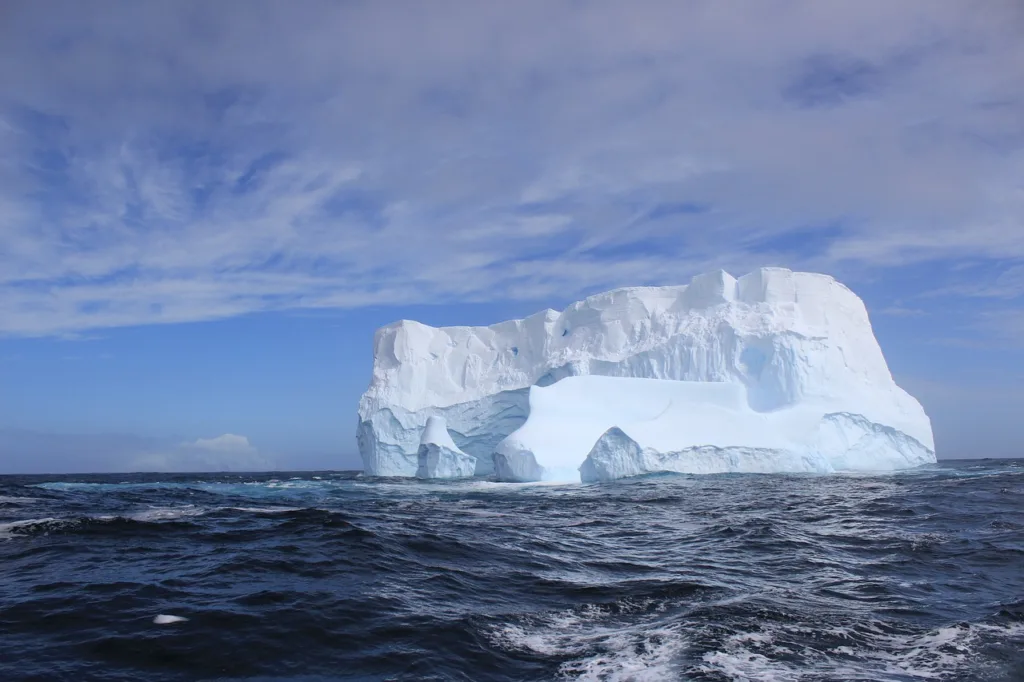
The best time to witness icebergs in Newfoundland and Labrador is from late spring to early summer, typically from April to July. However, peak iceberg season naturally occurs in May and June. During this period, a higher concentration of icebergs can be observed along the coastline.
Safety Tips and Precautions
While iceberg watching is a thrilling experience, it’s essential to prioritize safety. Here are a few precautions to consider:
- Maintain a safe distance from icebergs, especially when on the water. Sudden movements or breaks can occur, posing a risk to nearby boats or kayakers.
- Dress appropriately for the weather, as conditions near the coastline can be chilly. Layered clothing, windproof jackets, and waterproof footwear are recommended.
- Use experienced and licensed tour operators when embarking on boat tours or other iceberg watching activities. These operators prioritize safety and provide knowledgeable guides.
Iceberg watching in Newfoundland and Labrador offers an exceptional opportunity to witness the grandeur of nature. The province’s stunning coastline and the spectacle of massive ice formations create an unforgettable experience for visitors. Whether captivated by the scientific wonders of iceberg formation or simply seeking a breathtaking sight, this region will not disappoint. Plan your trip during the optimal viewing period, explore the prime locations, and follow the necessary safety precautions to ensure a memorable and rewarding iceberg watching adventure.
The Ecological Significance of Iceberg Watching
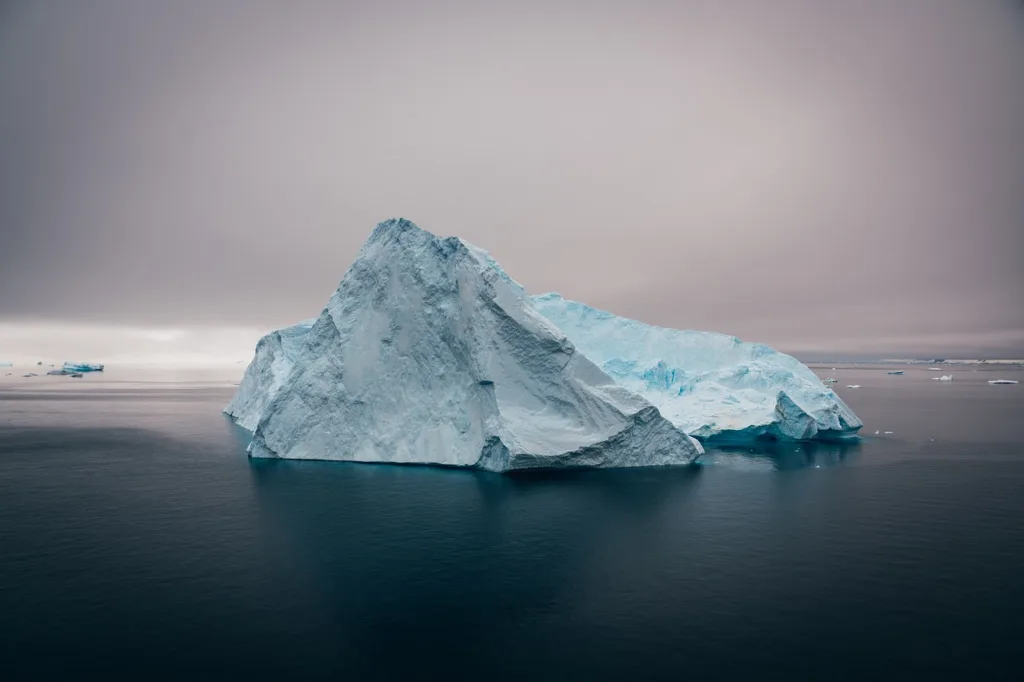
Iceberg watching in Newfoundland and Labrador goes beyond its visual splendour and holds significant ecological importance. These drifting ice formations carry freshwater from ancient glaciers, enriching the marine ecosystem along their path. The nutrients released by melting icebergs support the growth of phytoplankton, which forms the basis of the food chain for numerous marine organisms.
Furthermore, icebergs provide a unique habitat for various species. Birds such as gulls, kittiwakes, and fulmars often perch on the floating ice, using it as a resting place or a hunting ground. Seals and whales are also attracted to icebergs, seeking food and refuge in their vicinity. Witnessing the interplay between these animals and the icebergs adds another fascination to the experience.
Cultural and Historical Significance
Icebergs have played a significant role in Newfoundland and Labrador cultural and historical heritage. The indigenous Inuit and Innu peoples have long relied on icebergs as a vital resource, utilizing their freshwater for drinking and hunting marine life attracted to these icy giants.
Furthermore, the province’s rich Atlantic history is closely intertwined with icebergs. Stories of encounters with these formidable natural wonders have been passed down through generations, enriching the region’s folklore. Explorers, sailors, and fishermen have navigated the treacherous waters around icebergs, further cementing their place in local tales and traditions.
Impact of Climate Change on Iceberg Watching
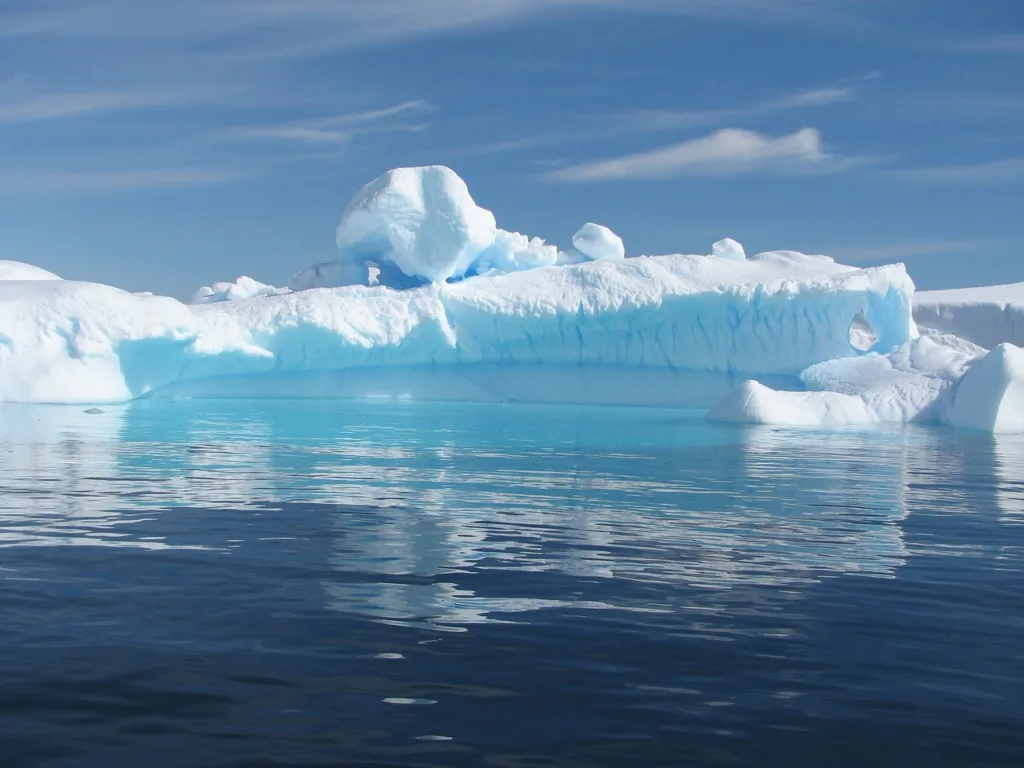
Climate change directly impacts the iceberg-watching experience in Newfoundland and Labrador. The warming temperatures and accelerated melting of glaciers contribute to increased iceberg calving. While this may initially seem like a positive outcome for iceberg enthusiasts, it is also an alarming indication of the changing climate. The rate at which icebergs are released into the ocean results from rising global temperatures. As climate change progresses, the delicate balance between iceberg formation and melting becomes disrupted. This has implications for the number and size of icebergs reaching the Newfoundland and Labrador coastline.
Viewing iceberg watching as an opportunity to raise awareness about climate change and its environmental consequences is essential. By appreciating the beauty and fragility of these ice formations, visitors can become advocates for climate action and conservation efforts.
Supporting Sustainable Tourism Practices
Promoting sustainable tourism practices is crucial to preserve the natural beauty and ecological integrity of iceberg watching sites. Here are a few ways visitors can contribute to our responsible tourism:
- Choose eco-friendly transportation options when travelling to iceberg-watching destinations. Consider minimizing carbon emissions by opting for public transport or carpooling.
- Respect the natural environment and wildlife by adhering to designated trails and viewing areas. Avoid littering, and follow the principles of “Leave No Trace of Your Presence.”
- Support local businesses and tour operators that prioritize sustainable practices and have a minimal environmental impact.
- Learn about the local communities’ history, culture, and traditions. Engage with the residents and support their economy by purchasing locally-made products.
The Emotional Impact of Iceberg Watching
The experience of witnessing massive icebergs in person often evokes a range of emotions. These icy behemoths’ sheer size and grandeur can leave visitors in awe and humility. The tranquillity and serenity of the surroundings and the visual spectacle create a profound sense of wonder and appreciation for the natural world.
The connection with nature that iceberg watching provides can be profoundly transformative. It offers a respite from the busy pace of modern life, allowing individuals to reconnect with the elemental forces that shape our planet. The experience can be humbling and invigorating, leaving a lasting impression and fostering a sense of responsibility toward environmental stewardship.
Iceberg watching in Newfoundland and Labrador offers an extraordinary opportunity to witness the majestic beauty of nature. From the geographical splendour and the science behind iceberg formation to the prime locations, optimal viewing periods, and safety tips, this coastal adventure promises to be an unforgettable experience.
Moreover, iceberg watching holds ecological, cultural, and historical significance while serving as a reminder of the urgent need to address climate change.
Can you see icebergs in Newfoundland now?
Icebergs are typically seen off the coast of Newfoundland from late spring to early summer. The best months for iceberg viewing are usually May and June. If it’s within this timeframe, you can likely see icebergs, especially in areas like Twillingate and St. Anthony.
When to see icebergs in Twillingate?
The prime time to see icebergs in Twillingate is from late May to early June. This period offers the highest likelihood of witnessing these massive ice formations as they drift southward along the coast.
Where is the best place to see icebergs?
The best places to see icebergs in Newfoundland include Twillingate, St. Anthony, Bonavista, and Fogo Island. Twillingate is often called the “Iceberg Capital of the World” due to its high iceberg count and accessibility.
What is the best month to see icebergs in Newfoundland?
The best month to see icebergs in Newfoundland is May. During this month, the icebergs are plentiful, and the weather is often more favourable for boat tours and coastal viewing.
How long do icebergs last in Newfoundland?
Icebergs can last from a few weeks to several months in Newfoundland waters. Their longevity depends on their size, the water temperature, and the weather conditions. Typically, icebergs seen off Newfoundland begin their journey from Greenland and take about 1-2 years to reach the island.
Where is Newfoundland Iceberg Alley?
Iceberg Alley refers to the stretch of ocean off the coast of Newfoundland and Labrador, where icebergs are commonly seen. It extends from the coast of Labrador down through Newfoundland’s eastern shore, including areas like Twillingate, St. Anthony, and Bonavista.
Are there icebergs in Newfoundland in August?
By August, the number of icebergs in Newfoundland significantly decreases. While it’s possible to see the occasional iceberg, they are much rarer than the peak months of May and June.
What month is the warmest in Newfoundland?
July is typically the warmest month in Newfoundland, with a temperatures ranging from 15°C to 20°C. This makes it a popular time for visitors seeking to explore the island’s natural beauty.
Where to see whales in Newfoundland?
Whale watching is popular in Newfoundland from June to September. The best locations include St. John’s, Trinity, Bonavista, and Witless Bay Ecological Reserve, renowned for its abundant marine life, including humpback whales.
Can you see the Northern Lights from Newfoundland?
You can see the Northern Lights from Newfoundland, particularly in the more northern and remote parts of the island. The best times are during the fall and winter when the nights are the longest and the skies are the darkest.
How close to Newfoundland did the Titanic sink?
The Titanic sank about 370 miles south-southeast off the coast of Newfoundland. The nearest land to the wreck site is the southeastern tip of Newfoundland.
How close is the Titanic to Newfoundland?
The Titanic’s wreck is located approximately 370 miles off the coast of Newfoundland. This proximity made Newfoundland a critical point in the communication and rescue efforts following the disaster.
Where did the Titanic sink off Newfoundland?
The Titanic sank in the Atlantic Ocean, approximately 370 miles south-southeast of Newfoundland coast.
Are there polar bears in Newfoundland?
Polar bears are not native to Newfoundland itself, but they occasionally appear on the northern coast of Labrador, particularly when sea ice drifts south from the Arctic.
What is the iceberg capital of Canada?
Twillingate, a small coastal town in Newfoundland, is known as the “Iceberg Capital of the World” due to its frequent and spectacular iceberg sightings during the peak season.
How fast do icebergs move?
Icebergs generally drift at about 0.7 kilometres per hour (0.4 miles per hour). However, their speed can vary depending on ocean currents, winds, and the iceberg’s size.
Why are icebergs sometimes black?
Icebergs appear black when they contain a high amount of sediment and debris. This can occur when icebergs calve off glaciers that scrape the land, picking up rocks and soil, which then get frozen into the ice.
Does the Atlantic Ocean in Newfoundland freeze?
The Atlantic Ocean around Newfoundland does not freeze over due to its relatively warmer temperatures than Arctic waters. However, sea ice and icebergs from the Arctic can drift into Newfoundland waters, especially during the spring.
Are there puffins in Twillingate?
While puffins are not commonly found in Twillingate, they are prevalent in other parts of Newfoundland, such as the Witless Bay Ecological Reserve. Twillingate is more famous for its iceberg and whale sightings.
What is the best time to see whales in NL Newfoundland?
The best time to see whales in Newfoundland is from June to September. Humpback whales, minke whales, and other species migrate through Newfoundland coastal waters during this period.
Is the tip of the iceberg visible?
Yes, the tip of the iceberg is visible above the water, but it represents only about 10% of its total mass. The remaining 90% is submerged underwater, making icebergs particularly dangerous for ships.
Can you see icebergs in Newfoundland in July?
Yes, you can still see icebergs in July in Newfoundland, although they are less common than in May and June. By July, many icebergs have drifted further south or melted.
Where is the best place to see icebergs?
Twillingate, St. Anthony, Bonavista, and Fogo Island are the best places to see icebergs in Newfoundland. These locations offer optimal viewing points and tour opportunities.
How often can you see northern lights in Newfoundland?
The Northern Lights can be seen in Newfoundland several times a year, especially in the fall and winter months. The frequency depends on solar activity and the clarity of the night skies.
Why is it called Iceberg Alley?
The stretch of water known as Iceberg Alley gets its name from the numerous icebergs that travel through this area each year. The icebergs originate from Greenland and drift down the Labrador Current past Newfoundland and Labrador.
When should I visit Iceberg Alley?
The best time to visit Iceberg Alley is from late May to early June. During this period, the highest concentration of icebergs can be seen, offering the most spectacular views.
Can you swim in Newfoundland in August?
Yes, you can swim in Newfoundland in August, especially in the warmer, sheltered areas like lakes and coves. However, the ocean waters remain pretty cold, typically around 12-15°C, so swimming in the sea can be chilly.
How hot is Newfoundland in July?
Newfoundland experiences its warmest weather in July, with a temperatures ranging from 15°C to 20°C. Some days can be warmer, especially inland and away from the coastal breezes.
These are the best travel planning resources you should use.
Looking to book your trip to Newfoundland and Labrador? Use these resources that are tried and tested by other travellers like you who vacation in Newfoundland and Labrador. Bookmark these links. Save them for future reference.
Booking Flights, Hotels or B&B: Start planning your next vacation trip by finding the best flight, hotel or b&b deals. Book Here
Finding things to do in Newfoundland and Labrador on TripAdvisor and Viator is not hard. Enjoy boat tours, whale watching, icebergs watching, kayaking and other activities.
You can also find low prices on hotels, B&B and cabins with these two providers. If you are located in Canada, the USA, the UK or Europe, use Booking.com, and if you are in Canada, the USA or anywhere else, use TripAdvisor.
Car Rental: Here is what we recommend:
When you book with Rentalcars.com, you can compare prices and find the best vehicle for your trip. Economybookings.com Display all their vehicle on the website with a detailed description. They display high-quality photos and a user rating as well. Qeeq.com serves road trip travellers like you from different countries by working with car rental companies worldwide.
Get compensated if your flight is delayed or cancel
AirHelp and Compensateair will help you with flight delays, cancellations, or denied boarding. All you need to do is to submit your flight details, and they will handle the claim process on your behalf. They will handle all the paperwork, airline negotiations, and legal proceedings.
Do you need more help planning your trip?
Check out our Resources Page, where we highlight all the resources and companies you can use to assist with your planning.
